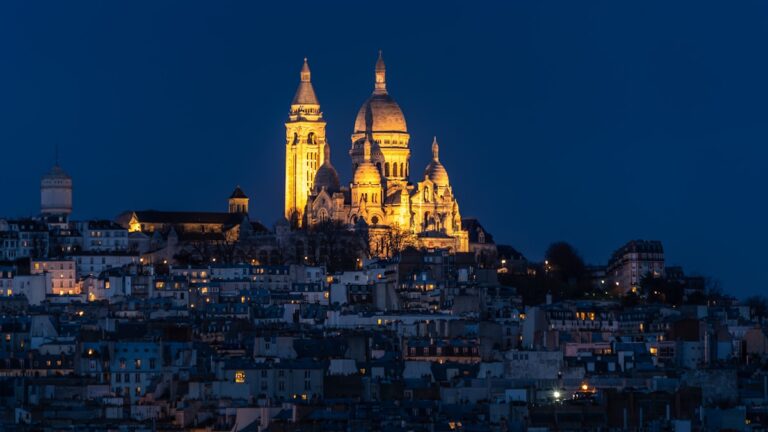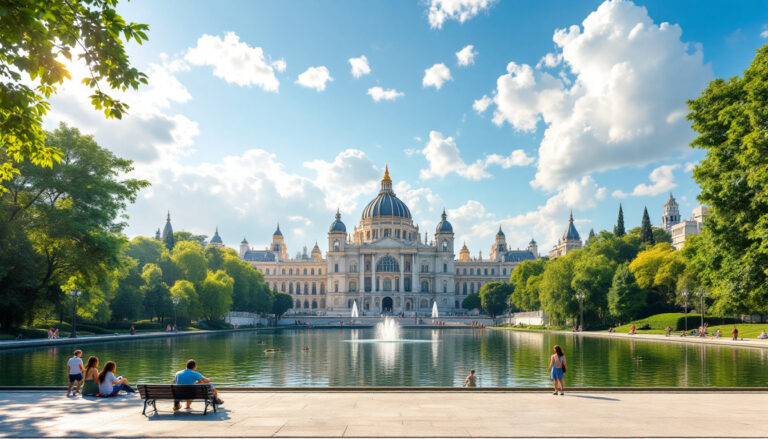Travel to Rome on a Budget: The Budget Traveler’s Guide to Rome

Travel to Rome on a Budget – Visiting Rome on a budget is entirely feasible with careful planning and smart choices.
- Planning a Budget-Friendly Trip to Rome for Backpacker
- Average Costs for Accommodation, Food, and Attractions
- How Expensive is Rome Compared to Other European Cities
- Best Budget Airlines and Train Options for Cheap Rome Holidays
- Booking in Advance vs. Last-Minute Deals for Savings
- Where to Stay in Rome on a Budget
- Areas With Affordable Hotels and Easy Access to Attractions
- Staying Outside the City Center to Save Money
- Cheap Hotels With Good Reviews and Amenities
- Hostels and Guesthouses for Solo and Budget Travelers
- Apartment Rentals and Budget-Friendly Airbnb Options
- Tips for Finding Affordable Places to Stay in Rome
- Getting Around Rome Without Overspending
- Rome Metro, Buses, and Trams for Budget Travelers
- Travel Cards and Passes for Unlimited Rides
- Best Walkable Neighborhoods and Scenic Routes
- How to Plan an Itinerary Without Relying on Transport
- When to Use Taxis and Rideshares Without Overpaying
- Alternatives Like Bike Rentals and Electric Scooters
- Cheap Things to Do in Rome for Budget Travelers
- Ancient Ruins, Piazzas, and Stunning Churches With No Entry Fees
- Best Viewpoints in the City Without Spending Money
- Affordable Museum Days and Discounted Tickets
- Hidden Gems That Don't Cost Much to Explore
- Avoiding Tourist Traps and Finding Free Walking Tours
- Planning Around Festivals and Events With Free Entry
- Saving Money on Food and Drinks in Rome
- Local Markets, Bakeries, and Street Food for Cheap Eats
- Finding Affordable Trattorias and Cafés Away From Tourist Areas
- Where to Get Budget-Friendly Pizza, Pasta, and Aperitivo Deals
- Avoiding Overpriced Restaurants Near Major Attractions
- Best Places to Buy Wine and Enjoy It Outdoors
- Finding Cheap Coffee and Snacks Like a Local
- How Much Does It Cost to Visit Rome for Different Budgets
- Budget Breakdown for Short and Extended Stays
- Where to Cut Costs and Where to Splurge
- Finding the Best Deals for Different Types of Travelers
- Saving Money on Group Travel and Family-Friendly Activities
- Booking Strategies for Flights, Hotels, and Attractions
- Last-Minute Travel Hacks for Unexpected Savings
- Final Tips for Traveling to Rome on a Budget
- Avoiding Peak Seasons and Finding Cheaper Travel Dates
- How to Get the Most Out of the Cheapest Time to Visit Rome
- Making the Most of Free and Low-Cost Attractions
- Traveling Smart With Budget-Friendly Choices
- Wrapping Up: Ready to Travel to Rome on a Budget?
Travelers can expect to spend between $100-150 per day as solo tourists or $175-250 for couples by booking accommodations in residential areas, utilizing public transportation, and enjoying local trattorias.
Strategic timing, including off-peak travel and advance bookings, can reduce costs by 20-30%.
Free Rome attractions like the Pantheon and historic piazzas offer authentic experiences, while the Roma Pass provides valuable savings. Countless budget-friendly secrets await discovery in the Eternal City.
TL;DR
Hide- Book flights 4-6 months in advance during off-peak seasons to save up to 30% on travel costs.
- Use public transportation with a weekly CIS pass (€24) instead of taxis for unlimited travel around Rome.
- Stay in budget-friendly neighborhoods like Termini or Esquilino, where hotels cost €50-80 per night.
- Eat at local trattorias and markets away from tourist spots, with meals averaging €15-40 per day.
- Visit free attractions like the Pantheon and historic churches, plus use free museum days on first Sundays.
Planning a Budget-Friendly Trip to Rome for Backpacker

Planning a successful budget trip to Rome starts with understanding typical costs for accommodations, meals, attractions, and local transportation, which can range from €50-200 per day depending on travel style.
Savvy travelers can greatly reduce expenses by booking flights during off-peak seasons, utilizing flight comparison tools, and considering nearby alternative airports like Milan or Naples.
Budget airlines, advance bookings, and flexible travel dates often yield the best deals for reaching the Eternal City, while trains and buses provide economical options for traveling within Italy.
How Much Does a Trip to Rome Cost? Breaking Down Expenses
Rome’s daily expenses typically range from €50-150 for budget travelers, with accommodations averaging €30-80 per night in modest hotels or hostels. Meals cost €15-40 per day at local trattorias, and major attractions charge €8-25 per entry.
While Rome ranks as one of Europe’s more expensive cities, it remains more affordable than Paris, London, or Zurich, especially for travelers who opt for off-season visits and stay in neighborhoods outside the historic center.
Savvy tourists can further reduce costs by purchasing Roma Pass for attractions, eating at authentic neighborhood establishments rather than tourist spots, and utilizing the city’s efficient public transportation system instead of taxis.
Average Costs for Accommodation, Food, and Attractions
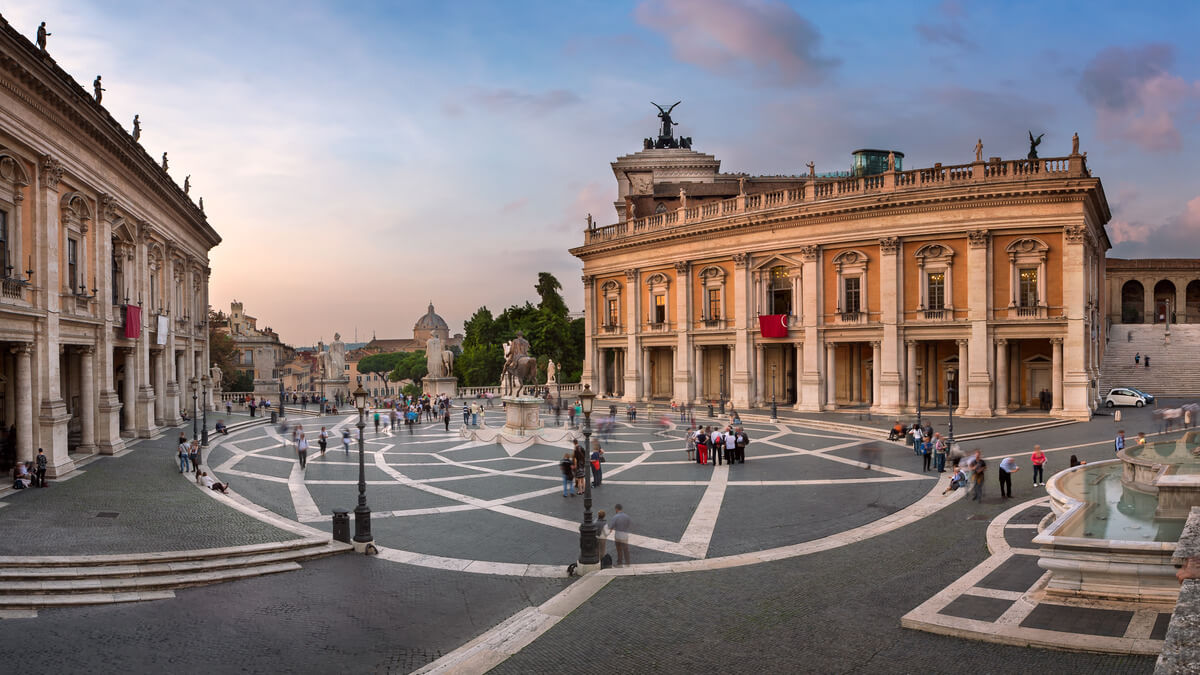
Most travelers can explore Rome comfortably on a daily budget of €70-150, excluding flights and accommodations.
Budget hotels in Rome average €50-80 per night, while cheaper places to stay start at €25 in hostels.
- Accommodation: €25-80/night
- Meals: €20-40/day (local trattorias and markets)
- Attractions: €15-30/day (including Vatican Museums, Colosseum)
Rome’s costs vary seasonally, with peak prices in summer. Also read our guide on the best time to visit Rome to find out when is the most affordable time to visit Rome.
How Expensive is Rome Compared to Other European Cities
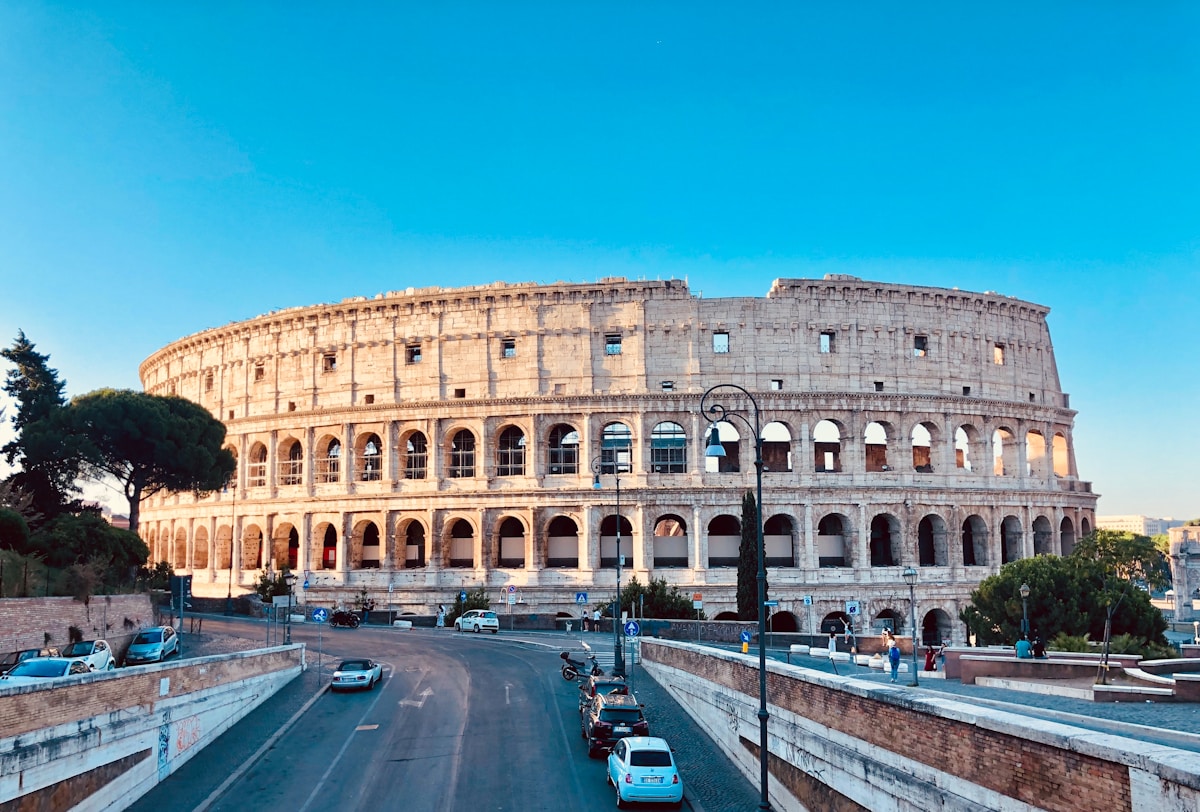
Compared to major Western European capitals like Paris and London, Rome offers relatively moderate prices for tourists, positioning itself as a mid-range destination in terms of cost.
While the Rome trip cost varies by season, visitors find the cost to visit Rome approximately 20% lower than Paris and 30% lower than London.
The cheapest way to get to Rome often involves booking flights during off-peak months and staying in outer neighborhoods.
Cheapest Way to Get to Rome: Finding Affordable Flights and Transport
Budget-conscious travelers can notably reduce their Rome travel costs by monitoring deals from low-cost carriers like Ryanair, EasyJet, and Vueling, which frequently offer competitive fares to Rome’s Ciampino and Fiumicino airports.
Train travel presents another economical option, particularly for those already in Europe, with services like Trenitalia and Italo offering regular connections to Roma Termini station.
While booking flights 3-6 months in advance typically yields the best savings, last-minute deals can occasionally emerge, making it worthwhile to sign up for fare alerts and monitor pricing trends.
Best Budget Airlines and Train Options for Cheap Rome Holidays
Finding affordable transportation to Rome requires strategic planning and knowledge of key budget carriers serving Italy’s capital.
For cheap trips to Rome, consider these proven options:
- Budget airlines like Ryanair, EasyJet, and Vueling offer heavily discounted flights to Rome’s Ciampino Airport.
- FlixBus provides low-cost bus routes from major European cities.
- Trenitalia’s regional trains connect Rome to other Italian destinations economically.
Booking in Advance vs. Last-Minute Deals for Savings
While travelers often debate between booking well in advance or waiting for last-minute deals, each approach offers distinct advantages for securing affordable transportation to Rome.
Early bookings typically yield better rates for peak seasons, potentially reducing the cost of trip to Rome by 30-40%.
However, cheap Rome vacations can materialize through last-minute deals during off-peak periods, especially for flexible travelers seeking spontaneous getaways.
Where to Stay in Rome on a Budget
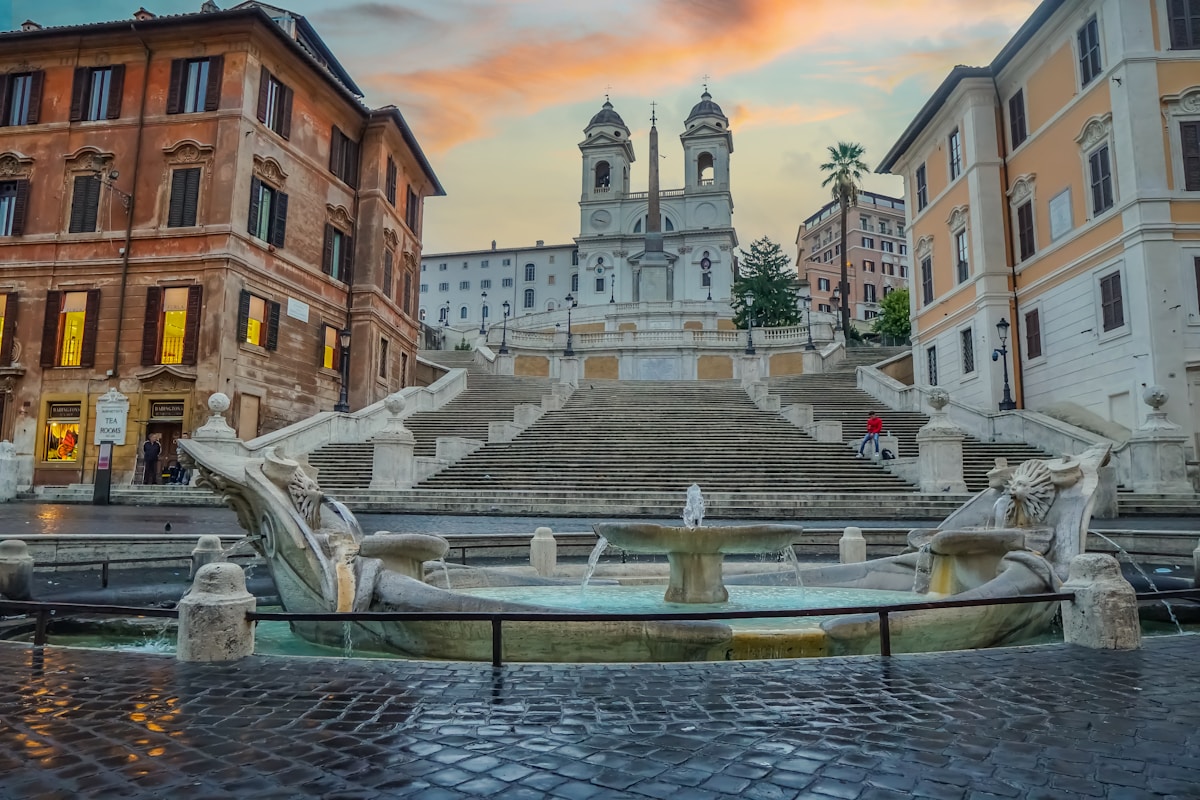
Finding affordable accommodation in Rome requires understanding the city’s diverse neighborhoods and their relative costs.
Budget-conscious travelers can explore options like hostels in Trastevere, guesthouses near Termini Station, or rental apartments in residential areas like San Giovanni.
These areas offer convenient access to major attractions while maintaining lower prices compared to central tourist zones near the Vatican or Spanish Steps.
Best Places to Stay in Rome on a Budget for Location and Price
Budget-conscious travelers can find affordable accommodations in Rome’s Termini and Esquilino neighborhoods, which offer convenient metro access to major attractions while maintaining lower hotel rates than the historic center.
The San Lorenzo district, popular with students, provides budget-friendly lodging options and a lively atmosphere with local restaurants and bars.
Staying in residential areas like Prati or Monteverde offers significant savings on accommodations while still keeping visitors within a 20-30 minute journey to Rome’s main cultural sites.
Areas With Affordable Hotels and Easy Access to Attractions
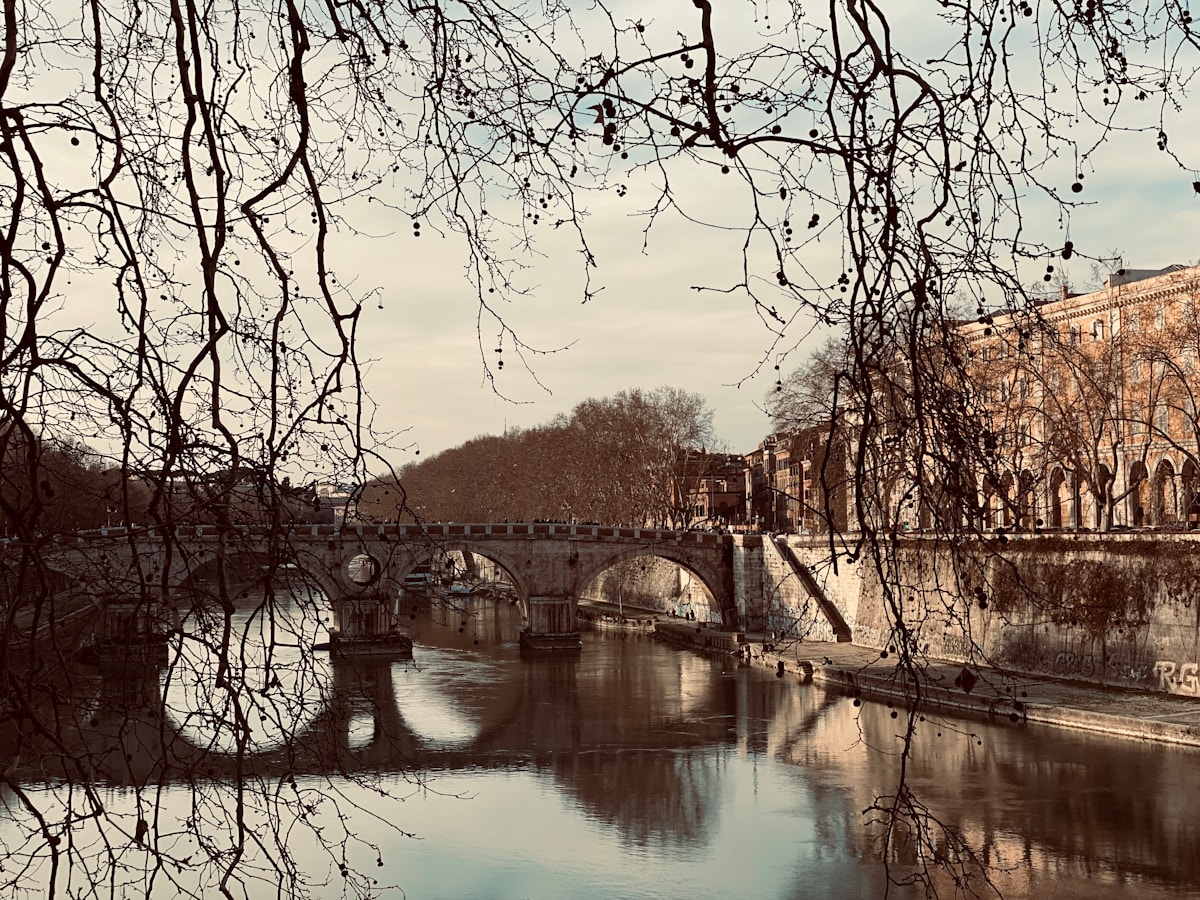
Savvy travelers can discover excellent accommodation deals in several Rome neighborhoods that offer both affordability and convenient access to major attractions.
When seeking where to stay in Rome on a budget, these areas stand out:
- Monti: Historic district with affordable guesthouses, walking distance to the Colosseum
- San Lorenzo: Student-friendly area near Termini Station with budget hotels
- Trastevere: Charming neighborhood with reasonably-priced B&Bs and local atmosphere
Staying Outside the City Center to Save Money
Three compelling neighborhoods outside Rome’s historic center offer significant savings on accommodations while maintaining excellent transportation links to major attractions.
Pigneto, San Lorenzo, and Testaccio provide budget-conscious travelers with authentic local experiences, lively nightlife in Rome, and affordable dining options.
These areas connect to Rome’s core via frequent metro and bus service, making things to do with a small budget in Rome easily accessible.
Budget Hotels in Rome for Comfortable and Affordable Stays
Savvy travelers visiting Rome can find excellent budget accommodations that balance comfort with affordability through carefully vetted hostels, guesthouses, and budget hotels.
Many well-reviewed properties like Generator Rome and The Yellow Hostel offer clean rooms, social atmospheres, and essential amenities while maintaining nightly rates under €50.
Budget-conscious visitors seeking more privacy can opt for modest yet comfortable hotels like Hotel Centro or Hotel Petra, which provide private rooms with en-suite bathrooms in central locations for around €70-100 per night.
Cheap Hotels With Good Reviews and Amenities
Finding comfortable and well-rated accommodations in Rome doesn’t require spending a fortune, as the Eternal City offers numerous budget-friendly hotels that combine affordability with quality amenities.
Top-rated budget hotels offering exceptional value include:
- Hotel Julia – Near Via Veneto, featuring complimentary breakfast and Wi-Fi
- Hotel Paba – Steps from the Colosseum with air conditioning and satellite TV
- Hotel Centro – Located in historic Monti district with 24-hour reception and modern bathrooms
Hostels and Guesthouses for Solo and Budget Travelers
For even more economical lodging options, Rome’s hostels and guesthouses offer excellent alternatives to traditional hotels, with rates often starting at just €20-30 per night.
Popular choices include The Yellow Hostel near Termini Station and Generator Rome, both offering clean dorms, private rooms, social atmospheres, and organized events.
Local guesthouses in Trastevere and Monti provide authentic neighborhood experiences with shared kitchens.
Cheapest Places to Stay in Rome for Longer Trips
For travelers planning extended stays in Rome, apartment rentals and Airbnb options often prove more economical than hotels, with many affordable units available in residential neighborhoods like Trastevere and San Giovanni.
Booking well in advance and focusing on properties slightly outside the historic center can yield significant savings, while still providing easy access to public transportation and local markets.
Monthly rental rates frequently offer substantial discounts compared to nightly rates, making them particularly attractive for stays longer than two weeks.
Apartment Rentals and Budget-Friendly Airbnb Options
When planning an extended stay in Rome, apartment rentals and Airbnb options present the most cost-effective accommodation solutions.
Budget-conscious travelers can find fully equipped spaces in residential neighborhoods like Trastevere and Testaccio.
Key benefits include:
- Full kitchens for self-catering and grocery savings
- Local neighborhoods with authentic Roman prices
- Weekly and monthly discounts up to 50% off nightly rates
Tips for Finding Affordable Places to Stay in Rome
Savvy travelers looking to extend their stay in Rome can find excellent budget accommodation options by focusing on specific neighborhoods away from the tourist center.
The Pigneto, San Lorenzo, and Testaccio districts offer authentic Roman experiences at lower costs.
These areas feature excellent public transport connections, local markets, and lively nightlife scenes while maintaining considerably lower accommodation rates than central tourist zones.
Getting Around Rome Without Overspending
Rome’s extensive public transportation network offers budget-conscious travelers an affordable way to navigate the city, with a single metro ticket costing just €1.50 and providing 100 minutes of unlimited travel on buses and trains.
Walking remains the most economical option, allowing visitors to discover hidden gems while meandering through the city’s ancient streets and archaeological wonders at no cost.
Tourists can effectively combine both walking and public transit to maximize their exploration of Rome’s major attractions without the expense and hassle of renting a car or taking costly taxis.
Cheapest Way to Travel in Rome Using Public Transport
Rome’s integrated public transportation network of metro lines, buses, and trams offers budget-conscious travelers an economical way to explore the city.
Visitors can purchase single tickets valid for 100 minutes of travel, or opt for cost-effective passes ranging from 24 hours to 7 days of unlimited rides across all transport modes.
The extensive system connects major attractions and neighborhoods, making it possible to traverse Rome efficiently while keeping transportation costs minimal.
Rome Metro, Buses, and Trams for Budget Travelers
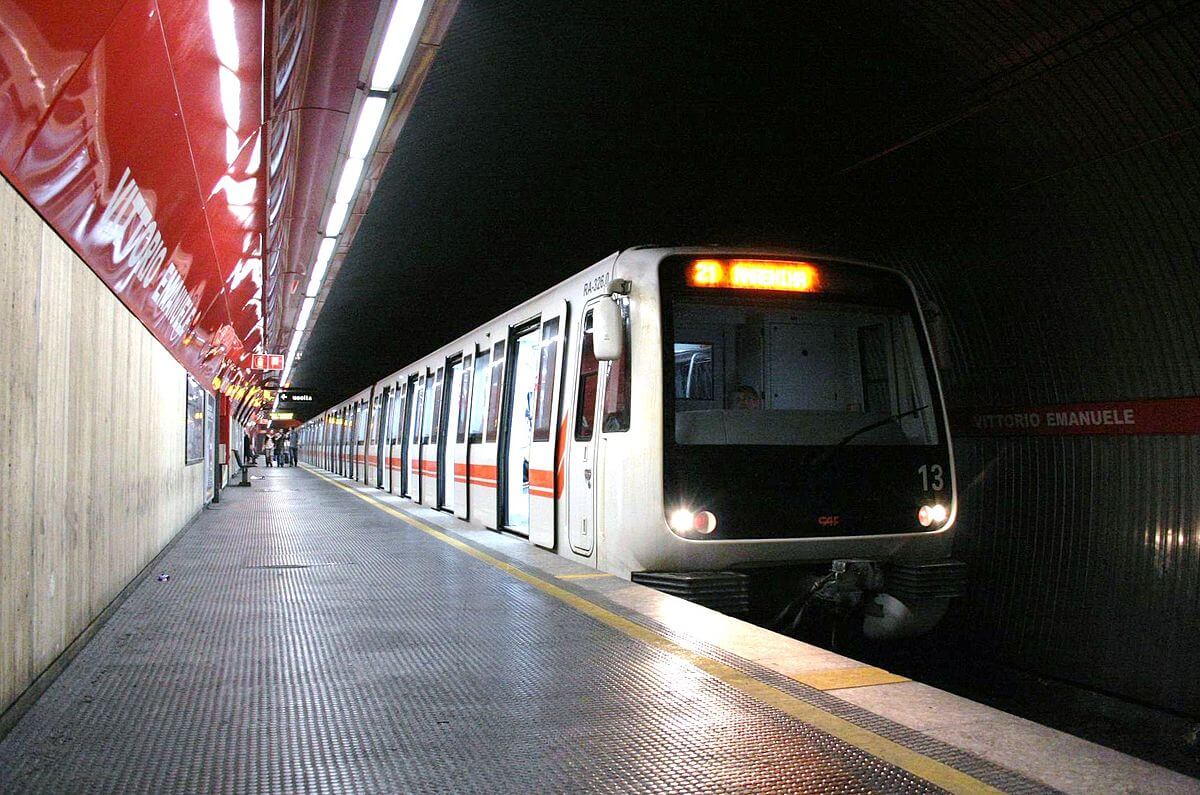
Maneuvering Rome’s sprawling cityscape doesn’t have to drain your travel budget, thanks to its extensive and affordable public transportation network.
Rome’s integrated transit system offers budget-conscious travelers multiple options:
- Metro lines A, B, and C connect major attractions and run from 5:30 AM to 11:30 PM.
- Extensive bus network covers areas where metro doesn’t reach.
- Historic tram lines provide scenic routes through charming neighborhoods.
Travel Cards and Passes for Unlimited Rides
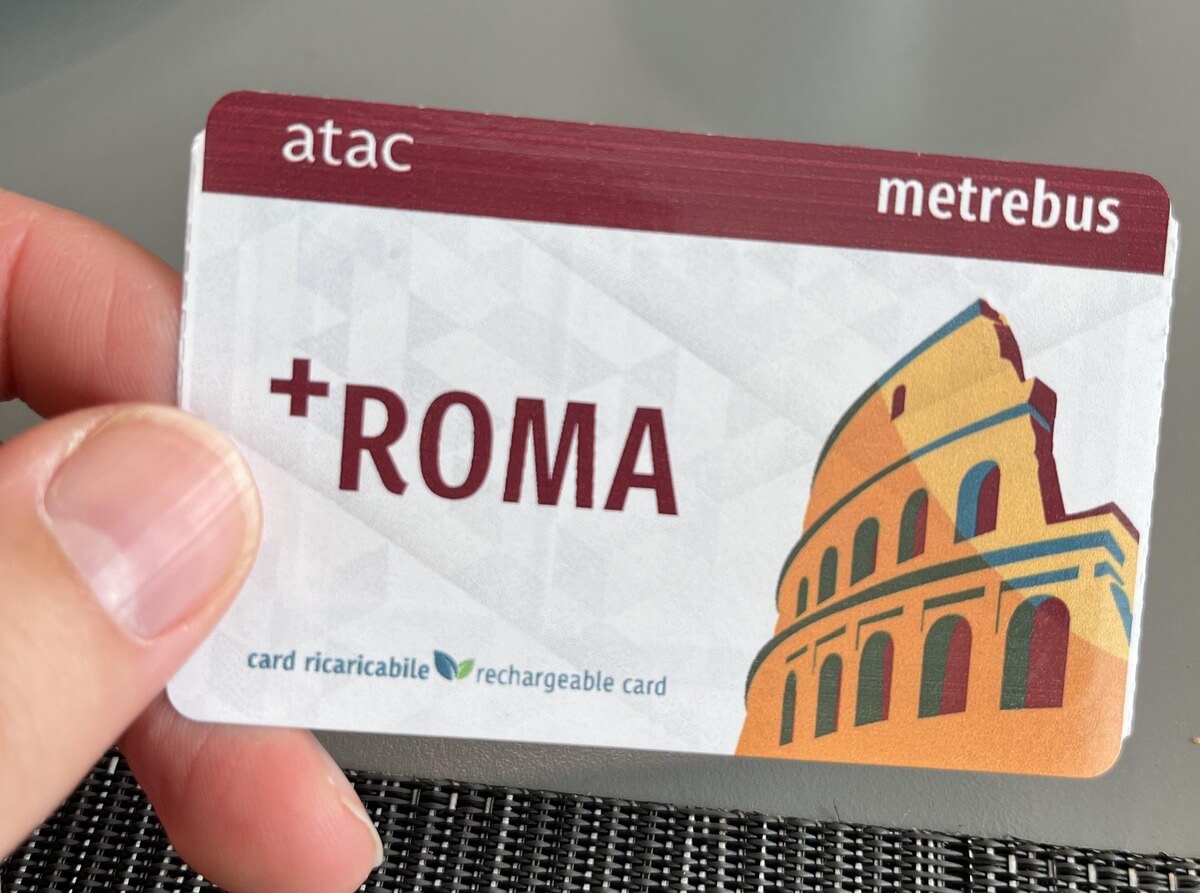
While single tickets might seem cheaper at first glance, savvy travelers can maximize their savings in Rome by purchasing travel cards that allow unlimited rides on buses, trams, and metro lines.
Options include 24-hour passes for €7, 48-hour passes for €12.50, and 72-hour passes for €18.
The weekly CIS pass, at €24, proves most economical for extended stays.
Walking in Rome: A Free and Enjoyable Way to Explore
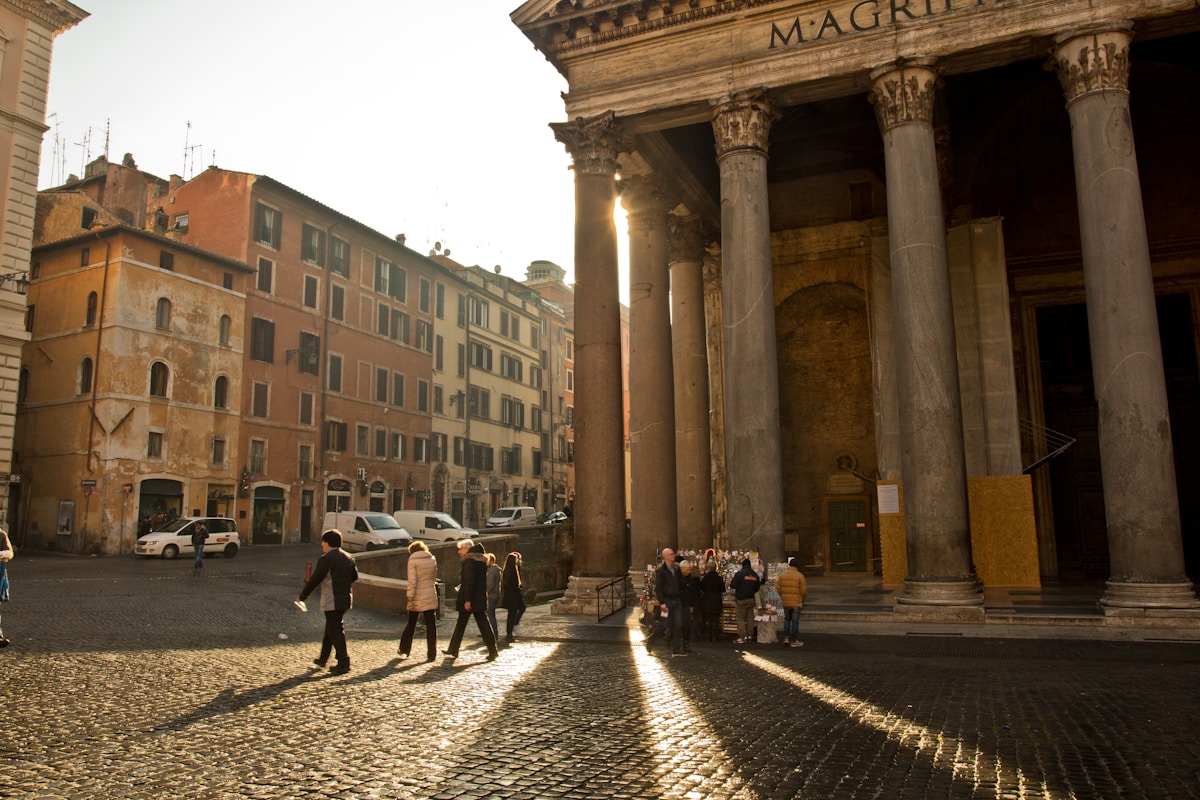
Rome’s historic center offers an intricate network of pedestrian-friendly streets and alleyways that connect major attractions like the Pantheon, Trevi Fountain, and Spanish Steps within comfortable walking distance.
Budget travelers can maximize their exploration by planning walking routes through charming neighborhoods such as Trastevere, Monti, and the Jewish Ghetto, where centuries of history unfold at every corner.
Creating a walking itinerary that groups nearby sites together allows visitors to experience Rome’s authentic atmosphere while eliminating transport costs entirely.
Best Walkable Neighborhoods and Scenic Routes
The historic heart of Rome unfolds as a walker’s paradise, with countless interconnected neighborhoods that invite exploration without the need for costly transportation.
Top routes for budget-conscious travelers include:
- Trastevere’s cobblestone lanes through artists’ quarters and hidden squares
- Ancient Appian Way’s cypress-lined paths past Roman ruins
- Monti district’s bohemian streets connecting major landmarks and local markets
Also read our previous post about best neighborhoods in Rome to visit, stay, and travel.
How to Plan an Itinerary Without Relying on Transport
Planning a walking-based itinerary in Rome maximizes both savings and authentic experiences, as many of the city’s most significant attractions cluster within natural walking zones.
Travelers can organize daily routes around key neighborhood hubs: Ancient Rome (Colosseum to Forum), Vatican City area, Centro Storico (Pantheon-Trevi-Spanish Steps), and Trastevere.
This strategic approach eliminates transport costs while revealing hidden gems between landmarks.
How to Get Around Rome on a Small Budget Without a Car
Getting around Rome is actually easy and affordable. Taxis and rideshare services in Rome are best reserved for late-night travel or reaching distant attractions, with rates considerably higher during peak tourist seasons and rush hours.
Budget travelers can opt for affordable bike rentals from numerous shops near major attractions, allowing flexible exploration of the city’s historic streets and hidden corners.
Electric scooters have emerged as a popular alternative, with several rental companies offering competitive hourly rates through easy-to-use mobile apps.
When to Use Taxis and Rideshares Without Overpaying
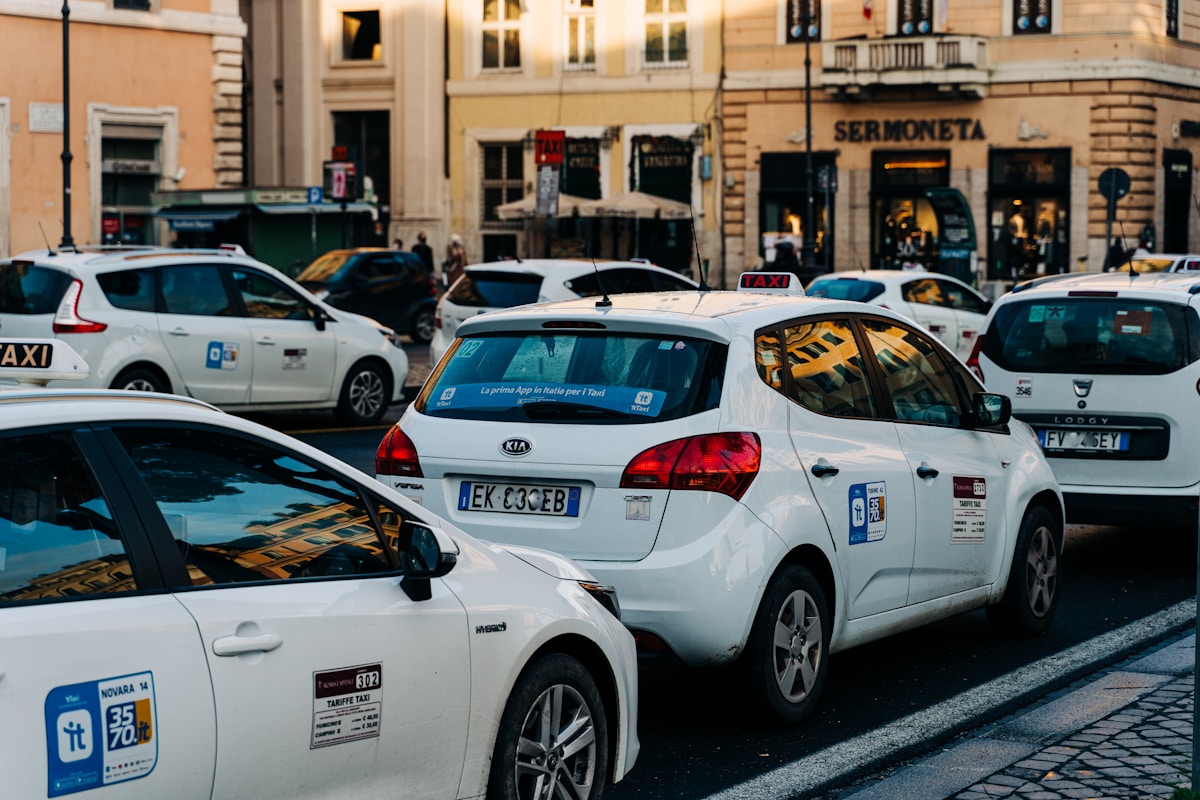
While public transportation remains the most economical way to explore Rome, certain situations warrant taking a taxi or rideshare service.
Consider using taxis or rideshares when:
- Traveling late at night when metro and bus services are limited
- Heading to/from airports with heavy luggage
- Visiting remote locations outside the central tourist zones
Always negotiate fares upfront and use official white taxis with “TAXI” signs.
Alternatives Like Bike Rentals and Electric Scooters
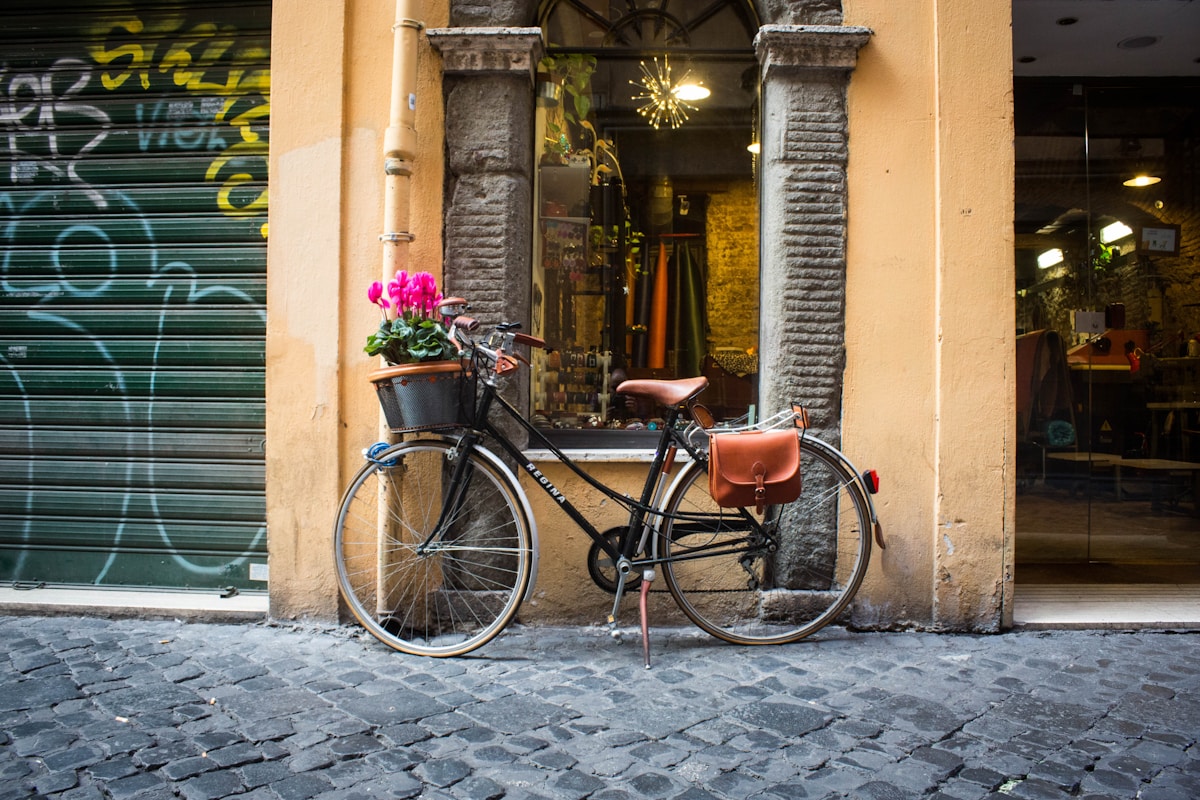
For budget-conscious travelers seeking alternatives to public transit, Rome’s bike-sharing programs and electric scooter rentals offer affordable and flexible transportation options.
Services like Bird, Lime, and BikeMi provide easy mobile app rentals starting at €1, plus per-minute fees.
These eco-friendly options allow visitors to explore hidden streets and districts while avoiding traffic congestion and expensive taxi fares.
Cheap Things to Do in Rome for Budget Travelers
Rome offers numerous free and low-cost activities that allow budget travelers to experience the city’s rich history and culture without spending a fortune.
Visitors can explore iconic sites like the Pantheon without admission fees, stroll through the enchanting streets of Trastevere, or marvel at the famous Trevi Fountain at no cost.
The city’s countless piazzas, historic churches, and ancient ruins provide authentic Roman experiences that won’t strain a tight budget.
Free Attractions in Rome That Are Worth Visiting
Rome’s wealth of free attractions makes it an ideal destination for budget-conscious travelers seeking cultural enrichment.
Visitors can explore iconic ancient ruins like the exterior of the Colosseum and Roman Forum, wander through historic piazzas including the magnificent Piazza Navona, and step into stunning churches such as the Pantheon without spending a single euro.
The city’s strategic hills and elevated viewpoints, particularly the Gianicolo and Pincio terraces, offer breathtaking panoramic views of the Eternal City at no cost.
Also read our previous post about the best things to do in Rome.
Ancient Ruins, Piazzas, and Stunning Churches With No Entry Fees
Wandering through the heart of the Eternal City, travelers can discover many of its most breathtaking attractions completely free of charge.
Rome’s historic center offers countless opportunities to experience ancient grandeur without spending a euro:
- The iconic Pantheon’s magnificent dome and oculus
- Peaceful Piazza Navona with its stunning Baroque fountains
- Santa Maria Maggiore’s glittering mosaics and ornate ceilings
Best Viewpoints in the City Without Spending Money
Beyond the street-level splendor of ancient monuments and churches, the true majesty of the Eternal City reveals itself from its celebrated hills and elevated terraces.
The Gianicolo (Janiculum Hill) offers sweeping panoramic views, while the Orange Garden on Aventine Hill provides stunning vistas of St. Peter’s Basilica.
The Pincio terrace above Piazza del Popolo showcases Rome’s iconic domes and bell towers.
Things to Do With a Small Budget in Rome
Rome offers numerous budget-friendly activities beyond its free attractions, including strategic ways to visit popular museums at reduced rates.
Smart travelers can take advantage of discounted admission days, such as the first Sunday of each month when many state museums waive entry fees, or purchase combination tickets that grant access to multiple sites at lower costs.
Lesser-known but equally fascinating locations like the Palazzo Massimo alle Terme and the Crypta Balbi provide rich cultural experiences at modest prices while attracting smaller crowds than major tourist sites.
Affordable Museum Days and Discounted Tickets
Many of Italy’s most precious artworks and historical treasures can be enjoyed in Rome without breaking the bank.
Savvy travelers can access world-class museums and archaeological sites through strategic timing and special passes:
- Visit state museums free on the first Sunday of each month
- Purchase the Roma Pass for skip-the-line entry and public transport
- Book online tickets in advance for significant discounts
Read our recommendations on the best Rome museums.
Hidden Gems That Don’t Cost Much to Explore
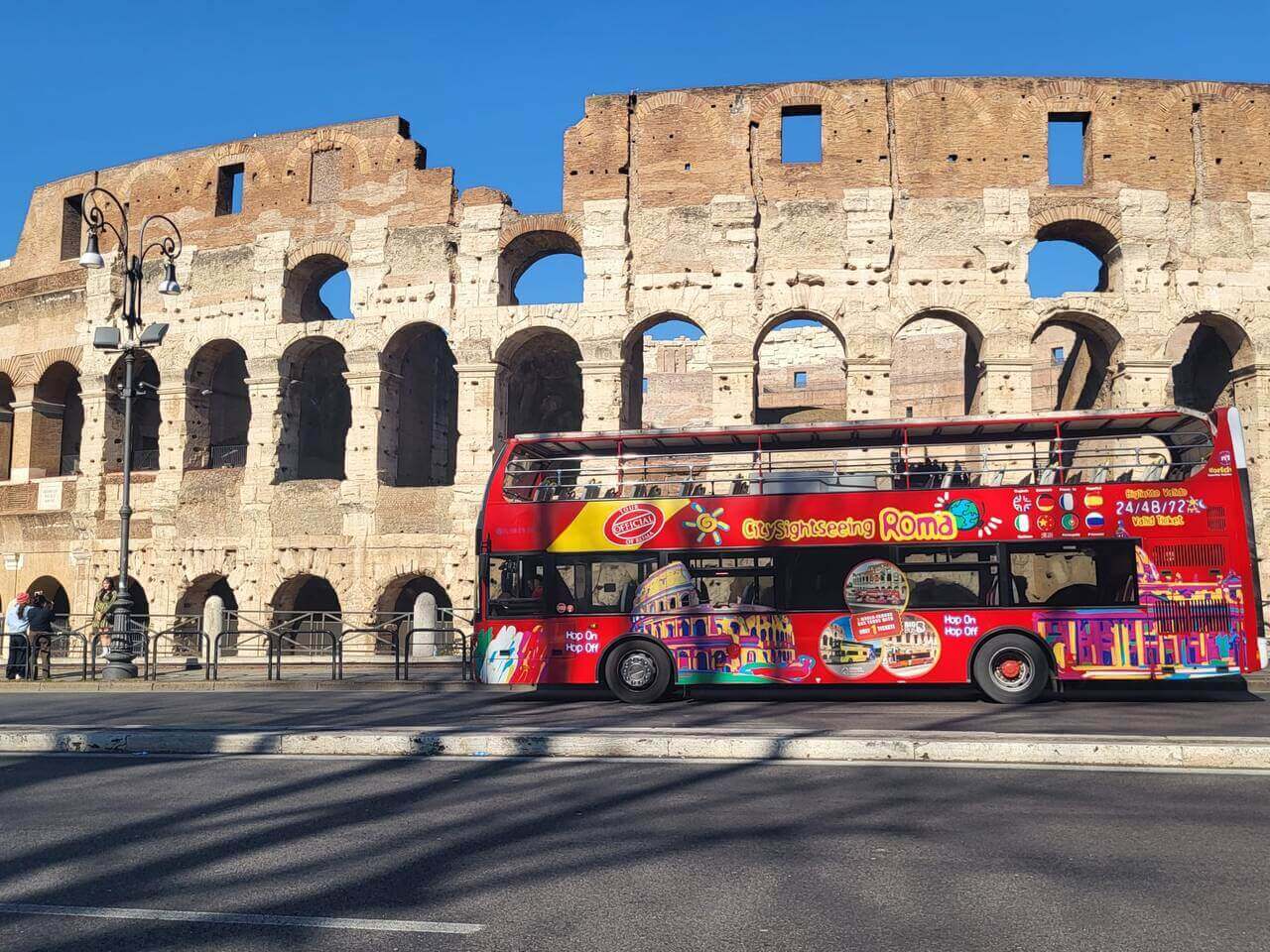
While popular attractions draw massive crowds, the Eternal City harbors countless lesser-known treasures that visitors can explore on a modest budget.
The Quartiere Coppedè showcases stunning Art Nouveau architecture, while the peaceful Protestant Cemetery offers artistic tombs and wandering cats.
The Orange Garden on Aventine Hill provides breathtaking city views, and ancient Appian Way beckons cyclists and history enthusiasts alike.
Cheap Rome Vacations: How to Enjoy the City for Less
Budget travelers can explore Rome’s treasures by strategically avoiding overpriced tourist traps and joining popular free walking tours offered throughout the historic center.
Planning visits around annual festivals and events with free entry, such as La Notte dei Musei and Festa della Repubblica, provides opportunities to experience Roman culture without spending money.
Local guides often share insider tips about lesser-known attractions and authentic experiences during these free tours, helping visitors discover the genuine character of the Eternal City.
Avoiding Tourist Traps and Finding Free Walking Tours
To make the most of Rome without overspending, savvy travelers should learn to distinguish authentic experiences from costly tourist traps.
Discover Rome’s hidden gems while keeping expenses low:
- Join free walking tours led by local guides who work for tips, offering authentic insights into the city’s history.
- Avoid overpriced restaurants near major attractions; explore local trattorias in residential neighborhoods.
- Visit iconic sites during off-peak hours, when crowds thin and photo opportunities improve.
Planning Around Festivals and Events With Free Entry
Many savvy travelers remain unaware that Rome hosts numerous free festivals and cultural events throughout the year, offering budget-conscious visitors exceptional opportunities to experience Italian traditions without spending a euro.
The Estate Romana summer festival features free concerts, films, and art exhibitions citywide.
Meanwhile, September’s White Night celebration transforms Rome into an all-night cultural spectacle with complimentary museum access and street performances.
Saving Money on Food and Drinks in Rome
Rome’s culinary scene offers plenty of opportunities to enjoy authentic cuisine without draining your wallet, especially if you follow local dining customs and timing.
Budget-conscious travelers can eat well by seeking out neighborhood trattorias, shopping at local markets, and embracing the Italian aperitivo tradition of pre-dinner drinks with complimentary snacks.
Visitors who venture beyond tourist hotspots will discover family-run establishments serving quality pasta, pizza, and wine at reasonable prices while experiencing genuine Roman hospitality.
Eating in Rome on a Budget Without Sacrificing Quality
Rome’s budget-conscious visitors can eat well by exploring the city’s lively local markets, traditional bakeries, and street food vendors, where authentic Italian flavors come at wallet-friendly prices.
Affordable trattorias and cafés thrive in residential neighborhoods like Testaccio and San Lorenzo, offering genuine Roman cuisine away from tourist-heavy areas.
These local establishments provide excellent value while maintaining the high culinary standards that Rome is famous for, often at half the price of their counterparts in more touristy zones.
Local Markets, Bakeries, and Street Food for Cheap Eats
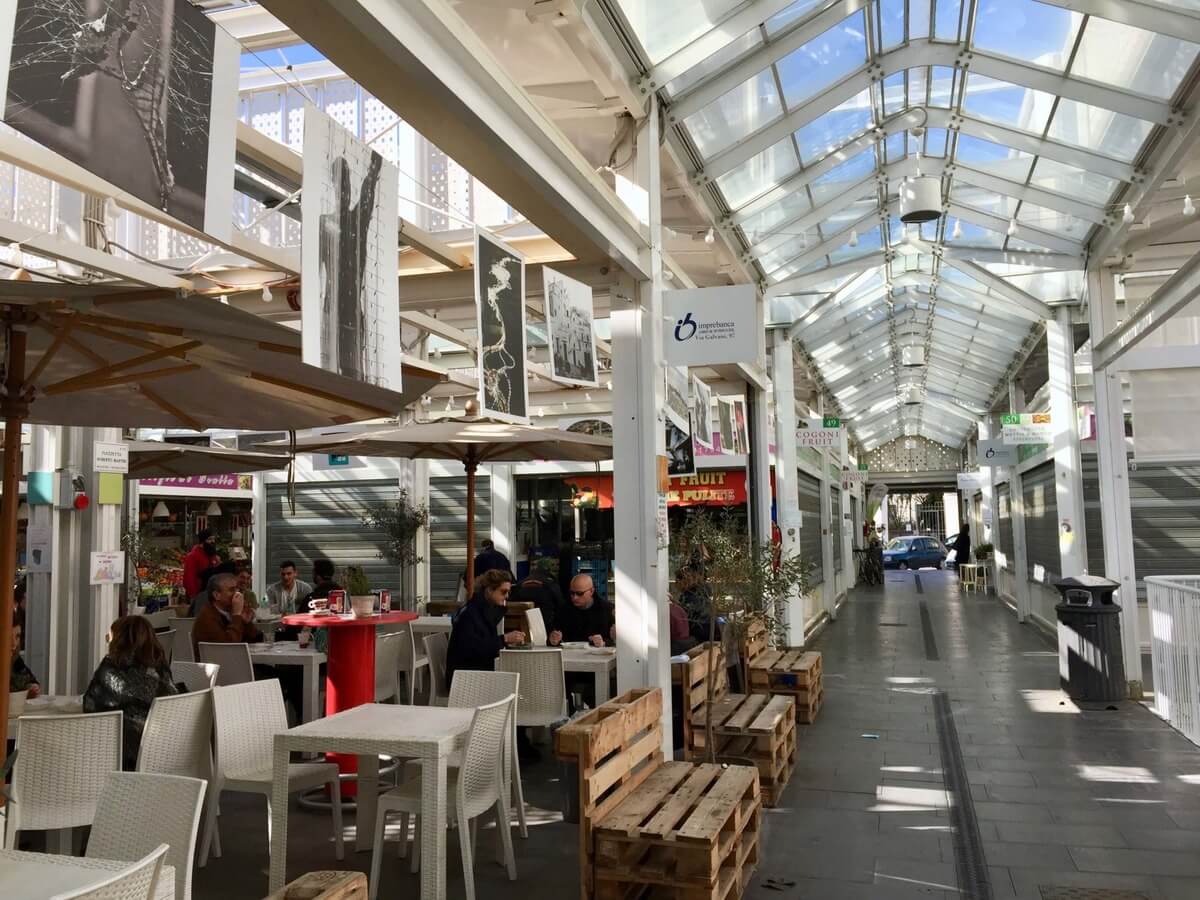
Savvy travelers can eat well in Rome without draining their wallets by exploring the city’s lively local markets, family-run bakeries, and authentic street food vendors.
For maximum value and cultural immersion, locals recommend:
- Campo de’ Fiori market for fresh produce, cheeses, and cured meats
- Roscioli Bakery for legendary pizza al taglio
- Trapizzino for innovative street food pockets filled with traditional Roman recipes
Finding Affordable Trattorias and Cafés Away From Tourist Areas
While tourist hotspots near major attractions often charge inflated prices for mediocre meals, venturing into Rome’s residential neighborhoods reveals a treasure trove of authentic trattorias and local cafés serving high-quality food at reasonable prices.
Neighborhoods like Testaccio, Trastevere, and San Lorenzo offer family-run establishments where Romans dine, featuring daily specials, house wines, and traditional dishes at fraction of tourist-area costs.
How to Experience Roman Cuisine Without High Prices
Rome’s authentic culinary experiences don’t require spending a fortune, especially when seeking out neighborhood trattorias and pizzerias away from tourist-heavy areas like the Colosseum and Vatican City.
Budget-conscious travelers can find excellent pizza al taglio (pizza by the slice) shops throughout residential districts like Testaccio and San Lorenzo, while many local bars offer complimentary appetizer buffets during aperitivo hours.
Traditional pasta dishes and Roman street food specialties are best discovered in working-class areas like Trastevere and Pigneto, where prices remain reasonable and quality stays high.
Where to Get Budget-Friendly Pizza, Pasta, and Aperitivo Deals
Food enthusiasts can experience authentic Roman cuisine without draining their wallets by knowing where locals eat.
The city’s traditional neighborhoods offer budget-friendly culinary gems:
- Testaccio Market’s pasta stalls serve classic dishes for under €10.
- Trastevere’s street pizzerias offer fresh slices from €3.
- San Lorenzo district’s bars feature aperitivo buffets with drink purchase, typically €10-12.
Avoiding Overpriced Restaurants Near Major Attractions
Tourists who venture too close to Rome’s major attractions often fall into the trap of overpriced, mediocre restaurants catering primarily to visitors rather than locals.
Savvy travelers should walk at least three blocks away from sites like the Colosseum, Vatican, and Trevi Fountain to find authentic Roman eateries.
Look for restaurants without tourist menus or staff beckoning from doorways.
Tips for Drinking in Rome Without Overspending
Budget-conscious travelers can purchase quality Italian wines from local alimentari shops for a fraction of restaurant prices and enjoy them in Rome’s picturesque public spaces like the Spanish Steps or Piazza Navona.
Coffee culture in Rome follows specific local customs, with standing at the bar being considerably cheaper than table service – often less than €1 for an espresso compared to €3-4 when seated.
To maximize savings while sampling Roman drinks and snacks, visitors should follow the locals’ lead by participating in aperitivo hours, where ordering a drink includes complimentary access to buffet-style appetizers at many bars.
Best Places to Buy Wine and Enjoy It Outdoors
Looking to enjoy Rome’s wine culture without draining your wallet? Local wine shops (enotecas) offer quality bottles at reasonable prices compared to restaurants and bars.
For a memorable experience:
- Visit Testaccio Market for affordable local wines
- Pick up wine at Bernabei near Termini station
- Enjoy your bottle at sunset on the Circus Maximus grass or Giardino degli Aranci
Also read our recommendations on the best places to visit in Rome.
Finding Cheap Coffee and Snacks Like a Local
While Rome’s café culture can seem pricey at first glance, savvy visitors can enjoy authentic Italian coffee and snacks without overspending by following local customs.
Standing at the bar instead of sitting at a table cuts coffee prices by half.
Locals frequent neighborhood bars away from tourist zones for quick espressos and cornetti.
Many spots offer standing aperitivo buffets during happy hour, where drinks come with complimentary snacks.
How Much Does It Cost to Visit Rome for Different Budgets
The total cost of a Rome vacation varies greatly based on trip duration, with weekend in Rome visits typically ranging from $500-800 per person and week-long stays from $1,200-2,500 per person for budget to moderate travel styles.
Solo travelers can explore Rome for as little as $100-150 per day, while couples should budget $175-250 per day, and families of four need approximately $350-500 daily for accommodations, food, and activities.
Booking flights and hotels 4-6 months in advance can reduce costs by 20-30%, especially during peak tourist seasons from April to October.
Cost of Trip to Rome for a Weekend vs. a Week
The cost of visiting Rome varies greatly between weekend trips and week-long stays, with typical budgets ranging from $500-800 for a budget weekend to $2000-3000 for a comfortable week.
Travelers can reduce expenses by choosing hostels over hotels, using public transportation instead of taxis, and visiting free attractions like the Pantheon and St. Peter’s Basilica.
While accommodation and transportation offer the biggest opportunities for savings, visitors should consider splurging on authentic dining experiences and skip-the-line passes for major attractions like the Colosseum and Vatican Museums.
Budget Breakdown for Short and Extended Stays
Planning a trip to Rome requires understanding how costs vary greatly between short weekend stays and week-long visits.
A detailed budget breakdown reveals typical daily expenses:
- Budget travelers: €70-100/day for hostels, street food, and basic attractions
- Mid-range travelers: €150-200/day for hotels, casual dining, and guided tours
- Luxury travelers: €300+/day for upscale hotels, fine dining, and private tours
Where to Cut Costs and Where to Splurge
Making smart spending choices in Rome allows visitors to maximize their experience while staying within budget.
Travelers should cut costs on accommodations by staying in neighborhoods like Trastevere or Monti, and save on meals by enjoying local markets and aperitivo.
However, splurging on select experiences like guided tours of the Colosseum or authentic cooking classes creates lasting memories worth the investment.
How Much to Go to Rome for Solo Travelers, Couples, and Families
Different types of travelers to Rome can find significant cost variations based on their group size and travel style.
Solo travelers often secure better deals on single rooms and enjoy flexibility with last-minute bookings, while couples can split accommodation costs and take advantage of pair-oriented promotions at restaurants and attractions.
Also explore: Best Day Trips from Rome
Families visiting Rome should focus on multi-person discounts for accommodations, look for children-eat-free restaurants, and purchase family passes to major attractions like the Colosseum and Vatican Museums.
Finding the Best Deals for Different Types of Travelers
When exploring the Eternal City, travelers quickly discover that Rome can accommodate virtually any budget, from backpackers to luxury seekers.
Savvy visitors can maximize their travel funds by:
- Using booking aggregators to compare boutique hotels and hostels during off-peak seasons
- Purchasing Roma Pass for free public transport and museum access
- Taking advantage of “aperitivo” hours for discounted dining experiences
Saving Money on Group Travel and Family-Friendly Activities
The cost of visiting Rome varies considerably based on group size and travel style, with families and larger groups often finding unique opportunities to reduce per-person expenses.
Groups can save by booking apartments instead of multiple hotel rooms, purchasing family museum passes, and taking advantage of group discounts at attractions.
Family-friendly activities like picnicking in Villa Borghese gardens and exploring ancient ruins offer economical entertainment options.
How Much is a Trip to Rome if You Plan in Advance
Planning a Rome vacation well in advance can greatly reduce costs through strategic timing of flight and hotel bookings, often saving travelers 30-50% compared to last-minute rates.
Smart travelers can secure the best deals by booking flights 4-6 months ahead and accommodations 3-4 months before departure, while also taking advantage of early-bird discounts on attractions and guided tours.
Surprisingly, some last-minute deals can emerge 2-3 weeks before departure, particularly during shoulder season, when airlines and hotels attempt to fill remaining vacancies with dramatic price reductions.
Booking Strategies for Flights, Hotels, and Attractions
Smart travelers can markedly reduce their Rome vacation costs through strategic advance booking of flights, accommodations, and attractions.
Key booking windows for ideal savings:
- Book flights 4-6 months ahead, targeting mid-week departures.
- Reserve hotels 3-4 months prior, focusing on off-season dates.
- Purchase Roma Pass and Vatican tickets 2-3 months in advance to avoid premium pricing.
Last-Minute Travel Hacks for Unexpected Savings

While advance booking typically offers the best value, savvy travelers can still uncover significant savings through last-minute Rome travel strategies.
Travelers can find deep discounts on unsold hotel rooms through apps like HotelTonight, capitalize on flexible airline flash sales, and secure same-day tickets to attractions at reduced prices through local tourism offices and ticket resale platforms.
Final Tips for Traveling to Rome on a Budget
Travelers seeking affordable experiences in Rome can maximize their savings by visiting during the low season months of November through February, when hotel rates drop considerably and tourist crowds thin out.
The shoulder seasons of March-mid May and September-October offer pleasant weather and moderately lower prices while avoiding the peak summer rush.
Budget-conscious visitors can still enjoy Rome’s major attractions by taking advantage of free museum days, walking tours, and local markets rather than expensive guided experiences.
Best Times to Visit Rome for Lower Prices and Fewer Crowds
Rome’s high season runs from June through August, when crowds are heaviest and prices peak for flights, accommodations, and attractions.
Budget-conscious travelers should target November through February (excluding Christmas and New Year’s) when hotel rates drop considerably and tourist numbers thin considerably.
March through mid-May offers a sweet spot of moderate prices and pleasant weather, though Easter week brings a surge of religious pilgrims and corresponding price increases.
Avoiding Peak Seasons and Finding Cheaper Travel Dates
When planning a budget-friendly trip to Rome, timing can make all the difference in both costs and crowd levels.
Savvy travelers can maximize savings by avoiding peak tourist seasons and targeting cheaper travel dates.
- Skip August, when locals vacation and many businesses close.
- Avoid Easter and Christmas peak pricing periods.
- Book during November-February for lowest hotel rates and airfare.
How to Get the Most Out of the Cheapest Time to Visit Rome
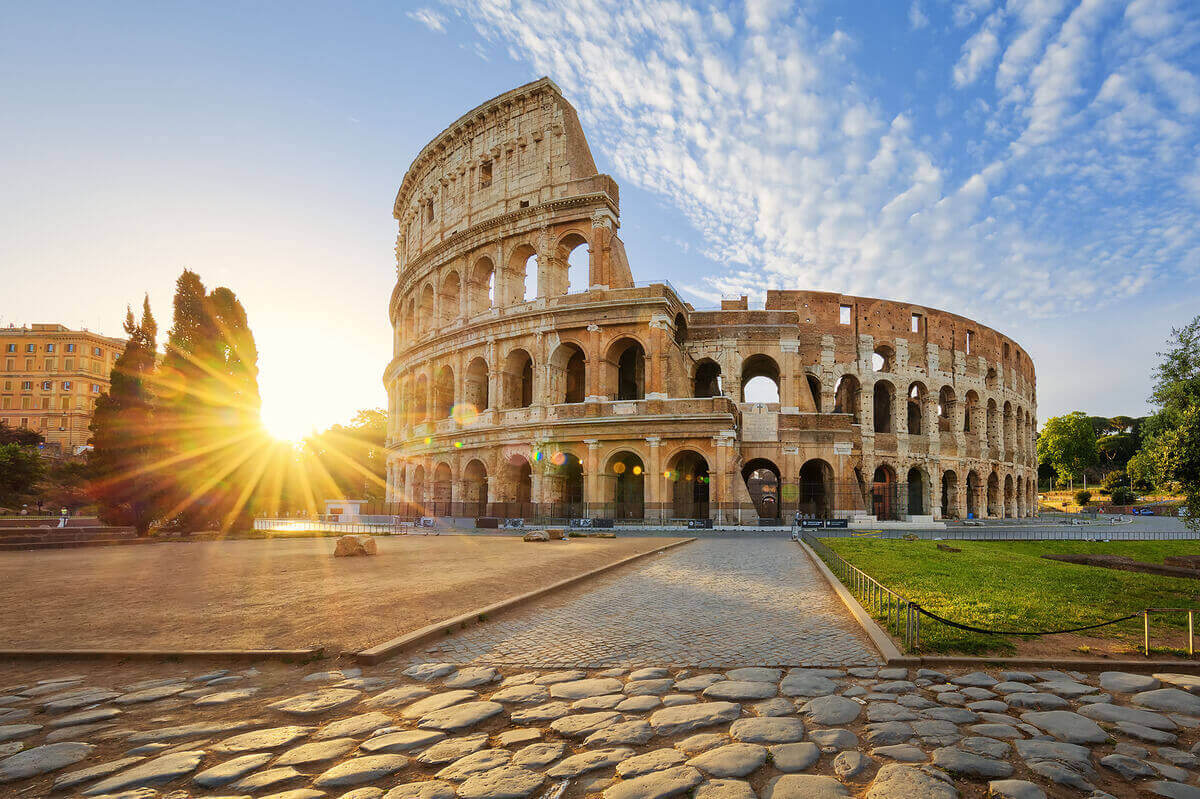
Planning a cost-effective Roman holiday during off-peak seasons requires strategic preparation to maximize both savings and experiences.
Visiting Rome between November and February offers significant discounts on accommodations and flights.
Travelers can explore major attractions like the Colosseum and Vatican Museums without massive crowds, book last-minute restaurant reservations, and enjoy authentic local experiences as tourism subsides.
Cheap Trips to Rome Without Compromising the Experience
Rome offers countless opportunities to experience its majesty without spending a fortune, from exploring ancient ruins visible from the street to wandering through historic piazzas and magnificent churches with free entry.
Smart travelers can maximize their experience by combining paid attractions with Rome’s abundant free sites, such as the Pantheon and Trevi Fountain, while taking advantage of combo tickets and tourist passes for must-see paid venues.
Budget-conscious visitors can further enhance their Roman holiday by choosing affordable local trattorias, using public transportation, and participating in free walking tours that provide rich historical context without the hefty price tag.
Making the Most of Free and Low-Cost Attractions
Savvy travelers know that experiencing the grandeur of Rome doesn’t require emptying one’s wallet.
The Eternal City offers numerous free and low-cost attractions that showcase its rich history and culture:
- Visit St. Peter’s Basilica and admire its magnificent architecture without paying entrance fees.
- Explore the Pantheon’s stunning dome and historic significance for free.
- Wander through Villa Borghese gardens, enjoying art and scenic views at no cost.
Traveling Smart With Budget-Friendly Choices
A handful of smart travel decisions can make the difference between an expensive Roman holiday and an enriching yet economical experience.
Travelers can maximize savings by booking flights during off-peak seasons, utilizing public transportation passes, staying in neighborhoods outside the tourist center, and carrying a reusable water bottle to fill at Rome’s numerous fountains.
Local grocery stores offer authentic ingredients for picnic-style meals.
Wrapping Up: Ready to Travel to Rome on a Budget?
Experiencing Rome’s beauty doesn’t have to empty your savings. With some planning, affordable lodging, and smart choices when eating out, you can enjoy the Eternal City without overspending.
Rome presents its multifaceted attractions to all individuals, encompassing both the exploration of historical sites and the discovery of lesser-known culinary establishments.
With some preparation and these money-saving ideas, visitors can create a memorable Roman vacation that’s easy on the budget.
Frequently Asked Questions (FAQs)
How much should I budget for a trip to Rome?
Budgeting for a trip to Rome can vary significantly depending on your travel style and preferences. For a mid-range vacation, you might want to budget around $150 to $250 per day, which covers accommodation, meals, and activities. This amount can help you enjoy Rome’s historical sites, dine at local trattorias, and stay in a comfortable hotel. However, if you’re on a tighter budget, you can manage with about $82 per day, focusing on hostels, street food, and free attractions.
When planning your trip, consider the cost of flights, which can range from $600 to $800 for a round-trip from major U.S. cities, depending on your departure city and how early you book. Accommodation costs can also vary, but booking in advance can help secure better deals. For meals, budget around €10 for breakfast, €15-€25 for lunch, and €20-€40 for dinner. Additionally, consider purchasing a public transport pass, such as the 48-hour ticket for €12.50, to save money on getting around the city.
Lastly, don’t forget to factor in entry fees for attractions, which can add up to about €20 per day. Overall, a well-planned budget can help you enjoy Rome’s rich history, culture, and cuisine without breaking the bank. For an 8-day trip, you might expect to spend around $1,500 per person, including flights and accommodation.
How much does a Rome trip cost?
The cost of a trip to Rome can vary significantly based on your travel style and preferences. For a budget-conscious traveler, daily expenses might range from $100 to $150 per day, covering basic accommodation, meals, and transportation. This can include staying in hostels, eating at local eateries, and using public transport. On the other hand, couples or those seeking a more luxurious experience might spend between $200 and $300 per day, opting for mid-range hotels and dining at mid-range restaurants.
For an 8-day trip, you might expect to spend around $1,500 per person, including flights, accommodation, food, and activities. Flights from major U.S. cities can range from $500 to $1,000, depending on your departure city and how early you book. Accommodation costs can vary widely, from budget-friendly hostels starting at $20 per night to luxury hotels costing $500 or more. Food prices are generally reasonable, with meals at mid-range restaurants averaging $30 per person. Activities, such as visiting the Colosseum or Vatican Museums, can add another $200 per person for the duration of your trip.
If you’re planning a more luxurious trip, costs can escalate quickly. For instance, staying in high-end hotels or vacation rentals can cost upwards of $500 per day. Business-class flights and luxury activities can also significantly increase your overall expenditure. For those seeking a premium experience, a budget of $10,000 for a week-long trip is not uncommon, especially if you include high-end accommodations and flights. Ultimately, the key to managing costs in Rome is to plan ahead, book early, and consider package deals that combine flights, hotels, and activities for savings.

